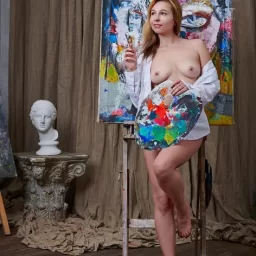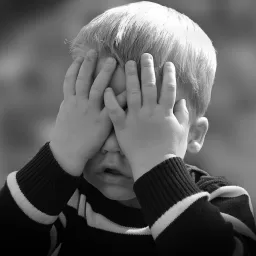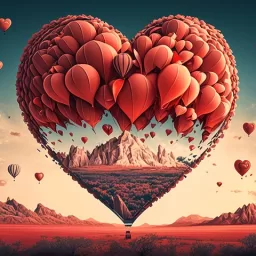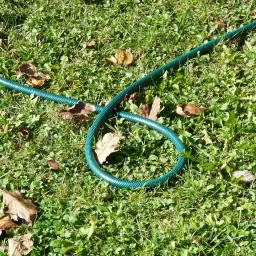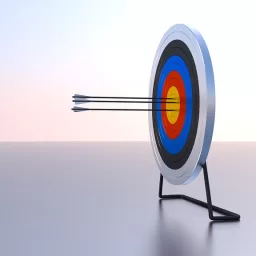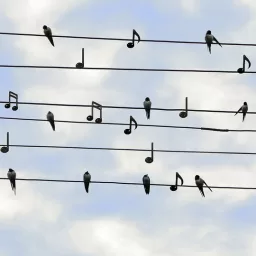
Follow my steps as I produce a poem. To start, I will need a subject – how about flowers? Next, I think about what flowers mean to me. What do I like about them? I like their colors and scents. What do I dislike about flowers? I dislike their thorns and bugs.
Also, I observe ideas that flow as I’m writing: The thorns and bugs are like the bad guys. The colors and scents are like bait for a trap. The bait draws me closer to the bad guys, where trouble begins. Then, I think how it’s ironic that what starts out as something pleasant, ends in something unpleasant.
Now, I have somewhat of an idea for a poem about flowers. I start writing the poem:
Red and yellow
Blue and white
Are the flowers I adore
A poetry meter appears (four beats for both lines 1 and 2, and four beats for the 3rd line), as well as a rhyme scheme (will be abc, abc). I think I’ll rhyme ‘white’ with ‘bite’, as the bees and thorns are sharp. I choose the word ‘adore’ because I know there are many words that rhyme with the ‘ore’ sound.
On this level, the poem is underway, though I wouldn’t expect to glean any deeper level, other than rhyme and meter, with perhaps a clever twist here or there. Really, it’s a poem like ones that start, “Roses are red, violets are blue…” However, the following method makes a poem stand out from others, and connects with readers.
I think, “Do I really adore flowers, especially for their colors? What do I actually adore? I adore being outdoors, like near the woods, or a lake.” So I attempt to relate what I adore to flowers. I’m hearing the rhyme of lake and fake, like fake flowers. I write:
Red and yellow
Twilight sunset
Blue and white
Daytime sky rise
Next, I relate flowers to the outdoors:
Big bouquet of outdoor pleasure
Plethora of hues and sundry scents
I see words that need a thesaurus, and rhythm that can be tightened. Notice the alliteration of ‘big bouquet’ and ‘sundry scents’. How can I relay hues and scents into word pictures, instead of the words themselves?
‘Blooming outdoor bouquet’ shortens and sounds more appealing. Now I’m searching the thesaurus for words that reference flowers in their meaning. I look up ‘hue’, and then its reference, ‘complexion’. I came across ‘stripe’, and thought of stripes in flowers. So I rewrite:
Red and yellow
Twilight sunset
Blue and white
Daytime sky rise
Blooming outdoor bouquet
Cloud striped hues
I need to identify the scents. The outdoors has scents of trees, water, flowers themselves, and fresh air. I like trees, so I’ll look for a thesaurus word that either sounds like trees or describes the scent. I find ‘spice’. It’s an interesting way to describe the scent of certain trees.
Red and yellow
Twilight sunset
Blue and white
Daytime sky rise
Blooming outdoor bouquet
Cloud striped hues shadow spiced bark yews
Of course ‘hues’ and ‘yews’ rhyme. I like that ‘striped’ and ‘spiced’ have assonance. I want to change ‘shadow’. Right now it’s not as descriptive as I would prefer, and its rhythm doesn’t sound tight. I shorten to ‘shade’. Now for the ending, I need a completion of thought. Up to now, I have only a display, with one thing like the other. I must invent some form of action or sentiment from the observer. I write:
Red and yellow
Twilight sunset
Blue and white
Daytime sky rise
Blooming outdoor bouquet
Cloud striped hues shade spice barked yews
Ah, an inspiration that ‘yews’ sounds like ‘you’. So, I’ll interject two people sharing the outdoors:
Soaking vases, me and you
I rearrange words and place ‘you’ at the end for rhyme. ‘Vases’ are an attempt to show two peoples’ reaction toward the outdoors subject, and to continue the flowers theme. A double meaning of ‘Soaking’ is a bouquet’s vase of water, and the sentiment, ‘soaking it in’. Finally, I reverse the order of the first stanza, so day turns to twilight, and shades the trees:
Blue and white
Daytime sky rise
Red and yellow
Twilight sunset
Blooming outdoor bouquet
Striped cloud hues shade spice barked yews
Soaking vases, me and you
DeviantArt
#Poem #Progress #Tips #Poetry
Post byBedewy for info askme VISIT GAHZLY

